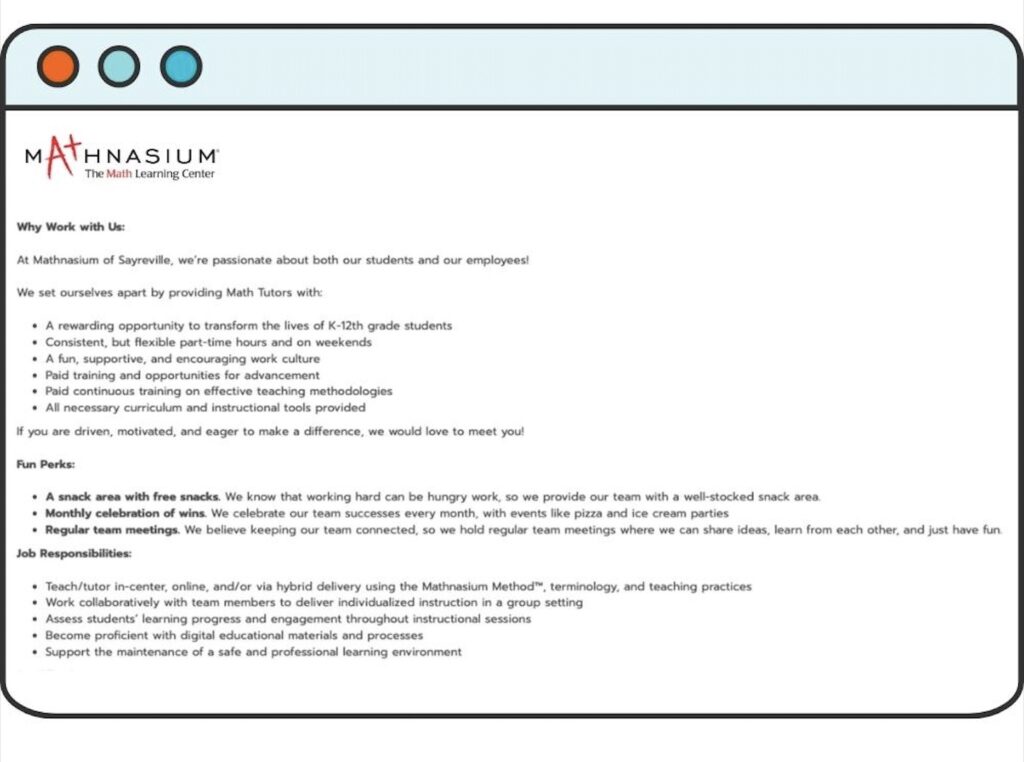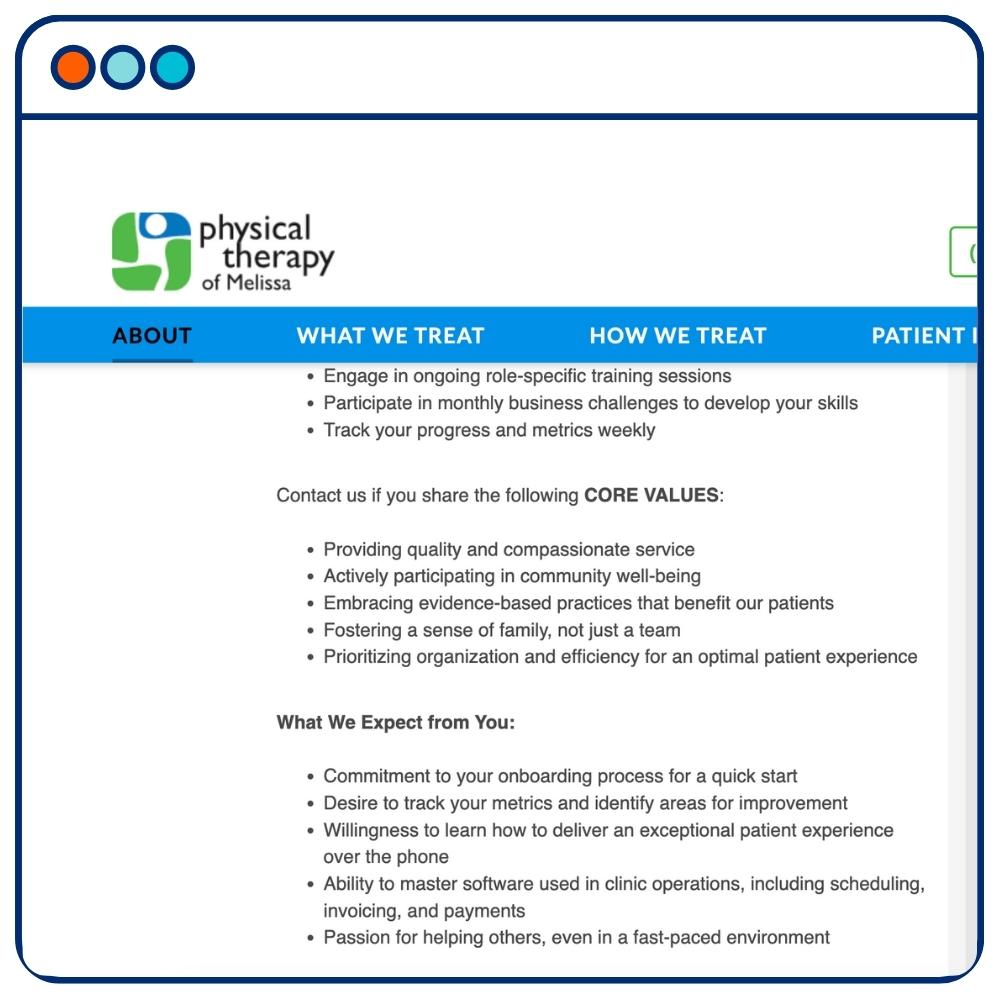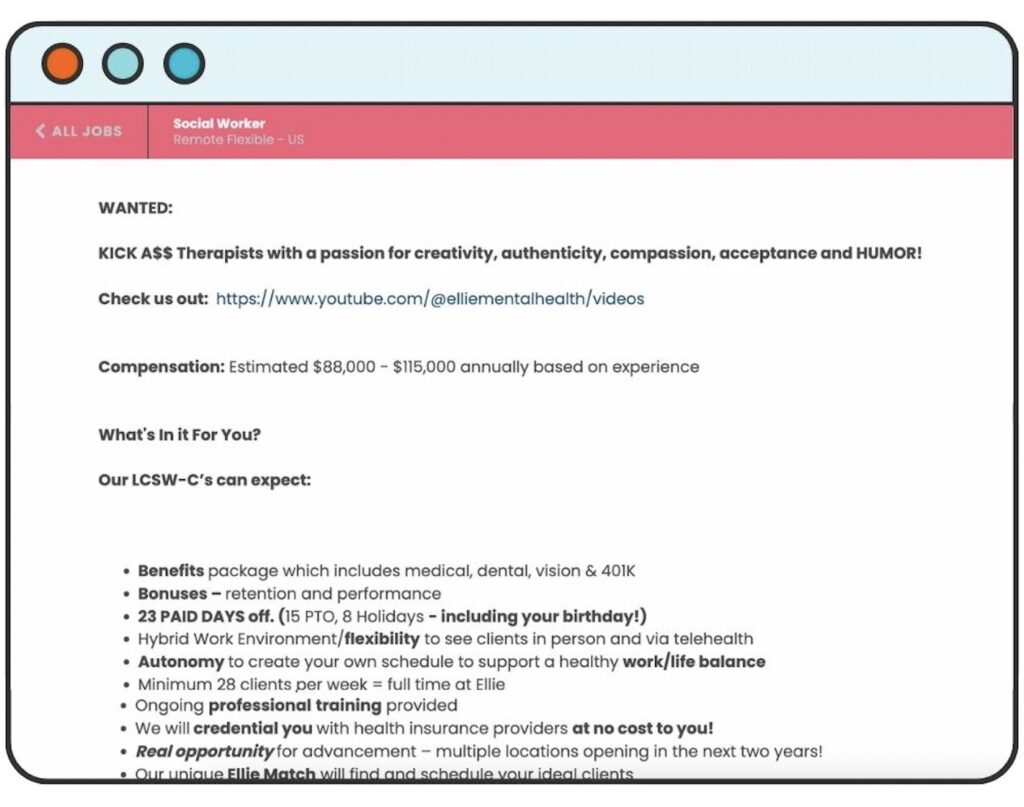One of the first steps to take when you have an open role to fill is writing a job description and distributing it far and wide. But not all job descriptions are created equal.
At CareerPlug, we’re committed to making hiring easier, and we know that an effective hiring process starts with an effective job description. But what makes some job postings stronger than others? And why is your job description so important anyway?
Don’t worry – we’re breaking it all down for you and sharing our best tips for writing job descriptions that attract more job seekers and make your hiring process easier.
What makes an effective job description?
These days, it takes a little more thought and effort to write a job description that stands out in an oversaturated job market. Job seekers have choices. Your job posting is the first impression that they’ll use as the basis for their decision to apply or not.
Gone are the days when employers could simply re-post the same old list of responsibilities and qualifications from 10 years ago. When we say employers should now aim to write an “effective job posting,” we’re making a distinction that it’s a step above a standard, basic job posting.
With a basic job posting, you can expect to get applicants, but you may be missing out on the applicants who are more discerning about where they apply – and often, these are the highest-quality candidates.
An effective job posting, on the other hand, is one that is attractive to job seekers and quickly drives them to apply to it.
The specifics around how many applicants an effective job posting brings in varies depending on your industry. For example, in our annual Recruiting Metrics Report, we found that in the automotive industry, the average job gets around 34 applicants. A typical job posting in the cleaning services industry gets almost double that, around 66 applicants per job.
To help determine if a job posting is effective or not for your industry, it can be helpful to look at industry benchmarks and your own averages. Plus, we like to remind employers that when it comes to applicant flow, quality is more important than quantity, and a big benefit of effective job descriptions is that they can help you bring in more quality candidates.
Let’s take a closer look at how this works and some of the other benefits of writing strong job postings.
Benefits of writing great job descriptions

Expands your talent pool with high-quality, motivated candidates
An effective job posting attracts a higher number of applicants, which means more potential candidates to consider for the position. More applicants means a broader range of skills, experiences, and backgrounds to choose from. This can be especially beneficial for positions that require specific expertise or niche skills, as a larger talent pool increases the likelihood of finding the right fit.
With an effective job posting, there’s also a better chance of attracting top-quality candidates who are motivated and genuinely interested in the role. These more motivated candidates are much more likely to stay engaged throughout the hiring process and say yes to your final offer.
Accelerates the hiring process to save on recruitment costs
When you have an open role to fill, you want to fill it fast. You know that every day with an empty seat means lost productivity and revenue for your business. A great job description can help expedite your hiring process and even save you money on recruitment costs.
This is because when you have more applicants rolling in, you can begin reviewing applications, conducting interviews, and making hiring decisions earlier, reducing the time-to-hire for your position. Plus, with more candidates applying organically thanks to your effective job posting, there’s less of a chance you’ll need to pay for external recruiters or extensive advertising of your open role.
Fosters a positive employer brand
A job posting that receives multiple applicants improves your employer brand and can give you a competitive advantage over other companies.
Some job boards like Indeed and LinkedIn actually show job seekers how many applications a job has received. A job posting with a lot of applicants signals to job seekers that you’re a great place to work. Candidates are more likely to view a company favorably if they see others are interested in working there too.
Plus, a great job posting is one important part of your overall recruitment marketing strategy. Along with things like highlighting employees testimonials online and maintaining good scores on employer review sites like GlassDoor and JobSage, creating a strong impression with job seekers with an effective job description will help you attract and retain great employees.
Effective job descriptions checklist
Your job posting should be searchable, concise, and mobile-friendly, and it should also include relevant and accurate information about the role. Candidates should be able to determine whether they are a good fit and apply to a job within 3 minutes. With that in mind, here’s a checklist of our best practices to write effective job descriptions.
1. Improve your job posting’s searchability
Effective job descriptions are ones that are easily found by candidates searching for jobs online. Put yourself in the job seeker’s shoes and think about what words they might be typing into Google to find a job like yours. Try to naturally weave those keywords into your job description.
Limit job titles to 70 characters or less, and use common job titles for increased searchability in job boards. For example: use “Account Executive” rather than “Sales Ninja”.
2. Avoid ineffective phrases in job titles and posting
Certain phrases give your job posting a spammy, illegitimate feel, and at worst, can get your job posting flagged and removed from job boards. Here are some common phrases it’s best to avoid:
- Hiring ASAP
- ASAP
- Hiring immediately
- Apply today
- Urgent
- Reliable
- Need
- Seeking
- Available
- Signing bonus!
- Limitless income potential
- Serious candidates only
- $$$ (and other symbols)
Additionally, there should be nothing in all caps, there should be no abbreviations, and no plural positions (use Nurse instead of Nurses).
3. Include a section on why an applicant would want to work for you
For a competitive job description, include a section that details why an applicant would want to work there. If you’re not sure where to start, consider checking out what your competitors are posting and trying to go a step above. You can also ask existing employees to share what they love most about working for your team.
If you’re posting the job on your careers page or company website, consider adding video or pictures to the job posting to show job seekers what it’s like to work at your company. List out the reasons that your company is great and why your role is such a good opportunity.
4. Include the compensation or a compensation range in the job description
Leaving the compensation blank can have a negative impact on applicant volume, as candidates don’t want to waste their time on jobs that aren’t paying a good wage. Being upfront about what you have to offer saves you time and effort in your hiring process and shows applicants that you’re a transparent company.
Plus, in some states, it’s now a requirement to include the compensation in your job posting, and not complying can have a negative impact on your ability to post your open jobs and make hires for your team.
New York began requiring compensation on job postings in September of 2023, and Indeed removed job posts that didn’t meet these requirements, causing a near 30% drop off in New York job postings on their site.
Prop tip: if you’re including a compensation range in your posting, make sure the highest end of the range doesn’t exceed 1.5x the base amount you’re willing to pay.
5. Add desired experience and skills
To help job seekers determine if they are interested and qualified for your role, your job posting should include the desired experience and skills that you are looking for.
This is a great opportunity for you to drill down and really think about what is important for your open role. Some jobs will have specific license, degree, or experience requirements, while others can be a little more flexible.
To attract more applicants, eliminate any requirements that aren’t totally essential. You should also consider listing out “soft skills” in addition to hard skills. Soft skills are a person’s inherent qualities like time-management, self-motivation, and patience and these are often just as valuable when trying to find the right person for your job.

Job seekers are more likely to picture themselves in roles when soft skills are listed in the job posting. One job seeker we spoke to had this to say, “I like finding postings that align with my skill set. I get pumped to apply when they say things like they’ll accept experience in place of degrees.”
6. Include at least 3 benefits
In addition to the standard benefits like health insurance, 401K, and paid time off, consider adding in other unique or competitive perks your company offers. Free lunch on Friday? The ability to work from home occasionally? Let job seekers know what’s in it for them.
We recommend listing your benefits early in your job posting.
7. Format your job posting so that it’s easy to read
Most applicants will skim job boards, quickly looking over job postings for only a few seconds at a time. For this reason, it’s important to make sure your job posting is concise and easy to read.
Bullet points can be helpful to keep each section organized and skimmable. Try to keep any paragraphs short. And don’t forget that blocks of text appear much longer for those job seekers viewing your posting on a mobile device, so aim to minimize large blocks of text.
8. Provide clear and accurate details about the role
Your job posting can save you time and help you weed out the wrong candidates for the job if you include clear and accurate information about the role. This includes stating information about the availability you need or the shifts you’re hiring for (if known).
In our 2023 Candidate Experience Report, we found that 21% of job seekers had declined a job offer in the past year because the role and responsibilities were different than they expected.
Giving job seekers a clear idea of the position and hours can help them determine early if they are a good fit, and can help you ensure that applicants meet the minimum requirements of your role.
9. Use inclusive language in your job postings
In previous job postings, you may have unintentionally used language that was exclusionary, limiting your talent pool without realizing it. To improve diversity of your workforce and attract a larger applicant pool, be sure to use inclusive language in your job postings.
Data suggests that using gender neutral language actually increases the application rate and lowers the cost per application. To keep your job postings gender neutral, pay attention to the pronouns you’re using (use “you” instead of “he” or “she”), and avoid “gender-charged” words like headstrong, competitive, and go-getter. Check out some more examples of this below:

You’ll also want to avoid using words like “young” and “energetic” to not exclude anyone based on age. Plus, reconsidering your degree requirements can help remove a huge barrier to skilled applicants that might not have the means, financial resources, or opportunities to graduate from college.
10. Share your company’s culture
At the bottom of your job posting, talk about your company’s overview, mission and culture. Your job posting is essentially an advertisement and an opportunity to sell your company. Including information about who you are and what makes you unique can help you win over applicants.

Good job description examples
Mathnasium does a great job of attracting applicants with a strong “why should you work for us” and “fun perks” section in their job posting for a math tutor (click on images to expand):
Check out the full job posting here.
Here’s another example of an effective job description for a receptionist role at Physical Therapy of Melissa. This business leads with a detailed section on what they offer including several benefits and the compensation range. They also help job seekers learn about the company and share the core values that can help job seekers determine if they are aligned with the team’s mission.
Check out the full job posting here.
Next, check out this job posting from Ellie Mental Health. This one gets bonus points for including a video and using a fun tone of voice that helps job seekers better understand the company.
This job posting also has a really detailed benefits section and a compensation range included at the top. To make it even more competitive, the compensation is above average for the area.
Check out the full job posting here.
Note that all of these job postings are well-organized with great formatting. And because they are all hosted through CareerPlug, the application process is quick and easy. Job seekers can apply directly from the posting without having to create an account or login elsewhere.
To sum it all up
An effective job description is one that catches the attention of job seekers, and turns them into applicants. It can also ensure that those applicants are highly qualified, motivated, and excited about your company and your role.
CareerPlug can help you optimize your postings with real time recommendations and job posting templates. Our hiring experts can also help you make sure your job posting is correctly formatted and that job seekers can apply easily from their mobile devices.
Don’t forget, your job description often serves as a first impression to your company – make it a good one!

Attract Quality Applicants with CareerPlug
CareerPlug gives you all the tools you need to host effective job postings and show off your business with an attractive careers page. Plus, our job board integrations allow you to post to all the major job boards with just one click. Reach job seekers wherever they’re searching and find your next great hire.
START HIRING






























